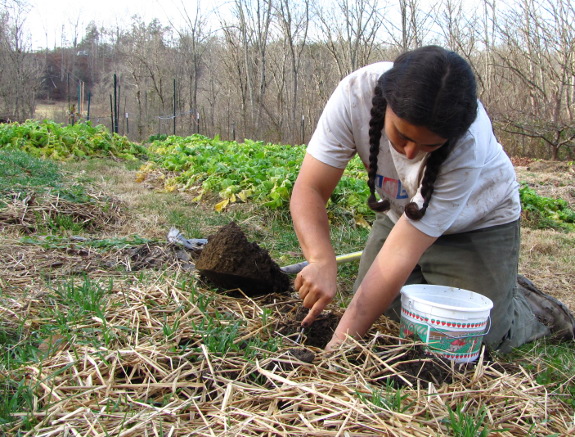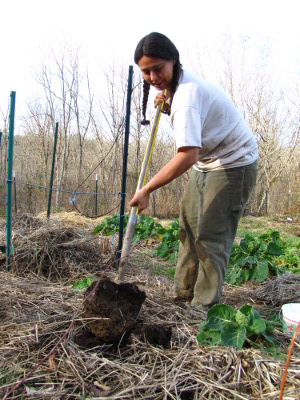
Soil testing for nutrient ratios

When we tested our soil
last winter, my
analysis was pretty
simple. I just wanted to make sure there weren't problematic
heavy metals in the soil and that all of the useful nutrients were
available in sufficient amounts. Everything looked okay, so I
didn't make any special changes after viewing my results.
 Now
that I'm reading Steve Solomon's excellent book The
Intelligent Gardener,
though, I'm ready to move to a second tier of soil analysis. I
started considering the
ratios of soil nutrients last winter, but hadn't read enough on the
topic to know exactly what I was looking for and how important slight
variations from optimal percentages were. Solomon's book has sold
me on the idea that these ratios are important (more on that when I
write a lunchtime series about The
Intelligent Gardener), and that adding amendments
like gypsum to get those ratios back on
track can produce huge changes in soil characteristics.
Now
that I'm reading Steve Solomon's excellent book The
Intelligent Gardener,
though, I'm ready to move to a second tier of soil analysis. I
started considering the
ratios of soil nutrients last winter, but hadn't read enough on the
topic to know exactly what I was looking for and how important slight
variations from optimal percentages were. Solomon's book has sold
me on the idea that these ratios are important (more on that when I
write a lunchtime series about The
Intelligent Gardener), and that adding amendments
like gypsum to get those ratios back on
track can produce huge changes in soil characteristics.
The only trouble is that
the information in Solomon's book only works if you use data from a
Mehlich 3 soil analysis. Any kind of soil test will give you
useful results, but you can't necessarily compare results between
different types of tests, and UMass
Amherst, who tested
my soil last year, uses a modified Morgan extractant.
Which is all a long way
of explaining why I'm biting the bullet and testing again, this time
using Logan Labs, which is explicitly
recommended by Solomon. If you want to follow along, I recommend
you learn about the basics of soil testing in Weekend
Homesteader: January,
then get your soil samples in the mail now. I'll be analyzing my
results here in early January (or whenever I finish digesting Solomon's
book), and will be glad to help you do the same.
Want more in-depth information? Browse through our books.
Or explore more posts by date or by subject.
About us: Anna Hess and Mark Hamilton spent over a decade living self-sufficiently in the mountains of Virginia before moving north to start over from scratch in the foothills of Ohio. They've experimented with permaculture, no-till gardening, trailersteading, home-based microbusinesses and much more, writing about their adventures in both blogs and books.
Want to be notified when new comments are posted on this page? Click on the RSS button after you add a comment to subscribe to the comment feed, or simply check the box beside "email replies to me" while writing your comment.

Hi Anna,
I use Logan Labs agrodyne III test with my clients. I very much recommend it!
Also, be sure to get and read Mike Astra's The Ideal Soil Handbook.
I will be getting the book you talk about.
Happy Holidays.
John